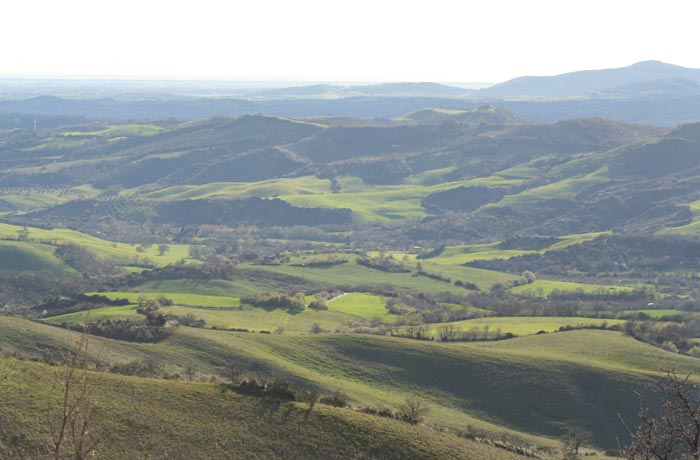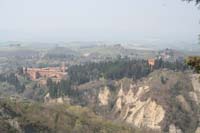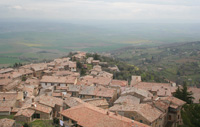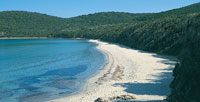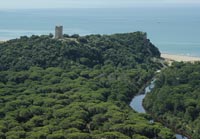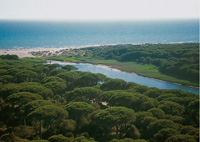
Walking in Tuscany | Lago di Burano | Walking in Tuscany, itineraries between sea and mountains
Once upon a time, Tuscany's Mount Argentario was an island. Now this rock is joined to the coast by way of three thin strips of land. Two of these, the Tombolo della Feniglia and the Tombolo della Giannella have formed naturally over the centuries, the other, the Orbetello lagoon dam (an artificial embankment serving as bridge) was constructed by man in 1840. Orbetello is a pleasant town of Tuscan Maremma, home to a number of noteworthy historic buildings. One of these is the Polveriera Guzman, edifice which now houses the town's Archaeological Museum. Then there is the renaissance style Palazzo del Podestà, the Gothic cathedral of Santa Maria Assunta, built on the ruins of an ancient Etruscan-Roman temple, and the Ciclopiche walls, erected in the 5th century B.C by the Etruscans.
The main attraction of Orbetello is the unique ecosystem created by those three tongues of sand which link the town with Mount Argentario. In the two coastal lagoons that have formed on either side of Orbetello, dozens of fish and bird species have found their natural habitat, including great colonies of pink flamingoes.
Close by, between the slopes of Mount Argentario and the Tyrrhenian coast, lie the famous bathing resorts of Porto Santo Stefano and Porto Ercole. The islands of Giglio and Giannutri are just a short boat ride away. Ideal place where to practice a whole variety of watersports, with its fabulous panoramic coastal pathways the Argentario is also perfect walking and mountain biking terrain, extremely popular with fitness fans and lovers of the great outdoors.
The Maremma is outstanding for its many protected natural areas that offer the chance to appreciate its wide variety of animals, insects and birds, trees, shrubs and flowers and to enjoy its special light and scenic beauty.The Nature Reserves aren't separate from the rest of the territory, but are symbolic of an integral whole. The Maremma affirms a way of life in harmony with nature and the rhythm of the seasons.
The Parco Naturale della Maremma encompasses the Monti dell'Uccellina, running parallel to the coastline from Principina a Mare to Talamone and was one of the first protected areas instituted in Italy.
Today the Province of Grosseto can boast of 13 Nature Reserves, an additional 8 which include Reserves for Repopulation, Biogenetics, Protection and Comprehensive Protection, plus the various oasis of the WWF. In all, there are almost 40,000 hectares of nature reserves stretching from north to south. They provide a complex and detailed vision of the wealth of the Maremma's natural heritage in all of its diversity from coast to inland, wet zones and mountain crests.
The numerous routes indicated within the parks enable the visitor to perceive the vastness of the preservation project and the botanical, zoological and geological wealth, differentiation, and beauty offered.
Maremma's natural heritage | www.parco-maremma.it
The Maremma coast has many facets: the mystical atmosphere of the Orbetello Lagoon and the golden, groomed beaches of the Feniglia and the Giannella not far from the Capalbio coast with lunar sand and wild, untouched dunes making it unique. The Islands of Giglio and Giannutri are rare jewels with rocky cliffs plummeting to the crystal-clear, emerald green sea and the scent of the Mediterranean scrub and aromatic herbs filling the air.
Fully equipped tourist ports such as Punta Ala, the fishing villages of Talamone, Santo Stefano and Porto Ercole on the slopes of the Argentario, reveal panoramic views over the coast and the islands and offer unforgetable sunsets spread across the sky.
Fortresses, citadels and towers clinging to the rocks create a vision of the time when these ancient ports, like those of Orbetello and Castiglione della Pescaia, were fortified. Today they offer a unique backdrop for those who "take to the sea" along a Mediterranean course.
The most beautiful regions in Tuscany |
Parco Naturale della Maremma
|

